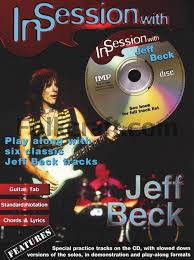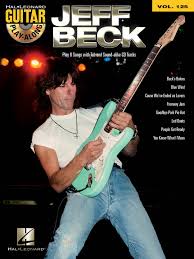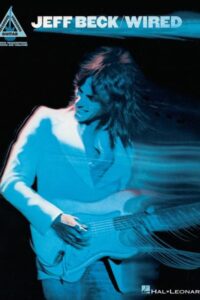Table of Contents
Come join us now, and enjoy playing your beloved music and browse through great scores of every level and styles!
Can’t find the songbook you’re looking for? Please, email us at: sheetmusiclibrarypdf@gmail.com We’d like to help you!
The Sonic Alchemist: An Exhaustive Exploration of Jeff Beck’s Genius

Browse in the Library:
Or browse in the categories menus & download the Library Catalog PDF:
Jeff Beck wasn’t just a guitarist; he was a force of nature, a restless sonic explorer who redefined the electric guitar’s vocabulary across six decades. His journey traversed blues-rock fury, psychedelic experimentation, jazz-fusion innovation, hard rock power, and even electronic textures, all unified by an unmistakable touch, unparalleled technical command, and an insatiable drive to push boundaries. To delve into Beck is to explore the evolution of modern guitar playing itself.

Best Sheet Music download from our Library.
I. Biography: The Reluctant Guitar Hero (1944-2023)
Born Geoffrey Arnold Beck on June 24, 1944, in Wallington, Surrey, England, Beck’s early life was steeped in practical creativity. His father was a piano tuner and accountant, his mother a factory worker. He initially gravitated towards art and building models, but the sonic lure of rock ‘n’ roll, particularly Les Paul’s multi-tracked wizardry and Cliff Gallup’s fiery licks with Gene Vincent’s Blue Caps, proved irresistible. He built his first crude guitar at 15, later acquiring a secondhand Fender Esquire.
Beck’s path intertwined early with fellow guitar legends. He briefly took lessons from Jimmy Page, a neighbor. He played in local bands like The Deltones, The Tridents, and Nightshift, honing his chops on R&B and rock standards. His big break came in 1965 when Eric Clapton left The Yardbirds. Beck was recommended by Page (then a session guitarist) and joined, immediately injecting a new level of ferocity, experimentation, and feedback mastery. Hits like “Heart Full of Soul,” “I’m a Man,” “Shapes of Things,” and the groundbreaking proto-metal riff of “Over Under Sideways Down” showcased his revolutionary approach.
However, Beck’s tenure was volatile. His perfectionism and unpredictable nature led to his dismissal in late 1966 (ironically, replaced by Page). Undeterred, he formed the Jeff Beck Group in early 1967, assembling a powerhouse lineup: a young Rod Stewart on vocals, Ron Wood on bass (later replaced by Ronnie Platt, then Dave Ambrose), and initially Aynsley Dunbar, then Micky Waller on drums. This band was arguably the blueprint for hard rock and heavy metal. Their two albums, Truth (1968) and Beck-Ola (1969), were seismic events – raw, powerful, blues-drenched, and dominated by Beck’s searing, sustain-drenched leads and innovative tones. Tracks like “Shapes of Things” (reimagined), “Beck’s Bolero,” “Plynth (Water Down the Drain),” and “Rice Pudding” remain landmarks. Personality clashes and Beck’s health issues (a car accident, exhaustion) led to the band’s dissolution just as they were poised for massive US success.
After a brief, chaotic attempt with bassist Tim Bogert and drummer Carmine Appice (Tea, Beck, Bogert & Appice or BBA), which yielded one funk-rock album (Beck, Bogert & Appice, 1973), Beck embarked on his defining solo career. Frustrated with the limitations of vocals and band dynamics, he embraced instrumental music. Signing with producer George Martin at Epic Records proved transformative. The mid-70s fusion trilogy – Blow by Blow (1975), Wired (1976), and the underrated There and Back (1980) – showcased Beck’s astonishing evolution. Collaborating with keyboardists Max Middleton and Jan Hammer, he fused jazz harmony and improvisational freedom with rock energy and his unique sonic palette. This era cemented his reputation as a musician’s musician, revered for his touch, phrasing, and harmonic sophistication.
The 80s saw Beck navigating changing musical landscapes. Albums like Flash (1985) featured vocals (including a Grammy-winning instrumental “Escape”) and collaborations with Nile Rodgers, while Jeff Beck’s Guitar Shop (1989) with Terry Bozzio and Tony Hymas marked a triumphant return to hard-hitting, complex instrumental rock. Throughout the 90s and 2000s, Beck remained prolific and unpredictable, releasing acclaimed albums like Who Else! (1999), You Had It Coming (2001) featuring the electronic-infused “Dirty Mind,” and Jeff (2003). He explored electronica, collaborated with artists as diverse as Imogen Heap, Roger Waters, and Seal, and continually refined his sound.
His later work, particularly Emotion & Commotion (2010) and Loud Hailer (2016), blended his signature guitar voice with orchestral arrangements (“Nessun Dorma,” “Corpus Christi Carol”), modern production, and continued sonic experimentation. He remained a formidable live performer, his concerts masterclasses in dynamics, technique, and emotional expression. Tragically, Jeff Beck died suddenly on January 10, 2023, from bacterial meningitis, leaving the music world bereft of one of its most innovative and influential voices. His passion for hot rods and custom cars remained a constant parallel pursuit throughout his life.

Please, subscribe to our Library.
If you are already a subscriber, please, check our NEW SCORES’ page every month for new sheet music. THANK YOU!
II. Music Style & Sonic Identity: Beyond Genre

Defining Jeff Beck’s style is impossible within a single genre. It was an ever-evolving synthesis, but core elements remained constant:
- The Voice: Beck treated the guitar as a vocalist. His phrasing was lyrical, conversational, and deeply expressive. He prioritized nuance, dynamics, and space over sheer speed. He could scream, whisper, cry, or laugh through the instrument.
- The Touch: His right-hand technique was foundational. He primarily used hybrid picking (pick + fingers) and often fingerstyle, allowing for incredible independence, complex polyphony, and a unique attack. His vibrato was wide, vocal-like, and deeply emotive.
- Whammy Bar Mastery: Beck elevated the vibrato arm (whammy bar) from a novelty to an essential melodic and textural tool. He didn’t just dive-bomb; he used it for subtle pitch bends, shimmering vibrato, microtonal expression, dramatic scoops, and otherworldly harmonic effects. He could make the guitar sound like a sitar, a human voice in distress, or a synthesizer.
- Tone Alchemy: Beck was obsessive about tone. From the raw, trebly bite of his Yardbirds Esquire through the soaring, singing sustain of his Les Paul/Marshall period (often using a Dallas Rangemaster treble booster), to the cleaner, more complex, and harmonically rich tones of his fusion era (often using Fender Twins, Roland Jazz Choruses, and later, customized Fender Hot Rods), his sound was instantly recognizable. He embraced feedback as a musical element and constantly sought new textures, incorporating wah-wah pedals, fuzz, octavers, envelope filters, and digital effects seamlessly.
- Rhythmic Fluidity: While capable of powerful riffing, Beck’s genius often lay in his rhythmic displacement – playing across the beat, using syncopation, and creating tension and release through timing. His sense of groove, especially in fusion contexts, was impeccable.
- Genre Fluidity: He absorbed blues, rockabilly, rock ‘n’ roll, R&B, jazz, Indian classical music (Ravi Shankar was an influence), funk, electronica, and classical, filtering it all through his unique sensibility.
III. Improvisational Licks & Techniques: The Toolkit of a Sorcerer

Browse in the Library:
Or browse in the categories menus & download the Library Catalog PDF:
Beck’s improvisation wasn’t about memorized licks; it was about spontaneous composition guided by emotion and melody. However, characteristic techniques formed his vocabulary:
- Microtonal Bends & Pre-Bends: Beck didn’t just bend to standard notes; he bent between them, achieving vocal cries, sitar-like glisses, and expressive quarter-tones. Pre-bending (bending the string before picking it) created sudden, dramatic pitch entries.
- Whammy Bar Melodies: Entire phrases could be played using the bar, bending notes without left-hand finger movement, creating fluid, horn-like lines impossible with fretting alone. See solos in “Where Were You” or “Cause We’ve Ended As Lovers.”
- Harmonic Squeals & Artificial Harmonics: Beck used pinch harmonics (picking while lightly touching the string with thumb) and natural harmonics extensively, often manipulating them further with the whammy bar for searing, ethereal screams (“Blue Wind,” “Freeway Jam”).
- Volume Swell Entrances: Using his pinky on the volume knob, he would fade notes in slowly, creating a haunting, vocal-like attack (“Goodbye Pork Pie Hat,” “Nessun Dorma”).
- Hybrid Picking Fluency: This allowed for simultaneous melody and chordal fragments, intricate arpeggios, and rapid-fire single-note runs with a unique articulation (“Led Boots,” “Scatterbrain”).
- Feedback Control: Sustain wasn’t just long notes; it was sculpted feedback, held and modulated by his positioning relative to the amp, becoming part of the melodic line (Yardbirds era, “Beck’s Bolero”).
- Chordal Soloing: Beck often wove complex chords and double-stops into his solos, creating rich harmonic textures even in single-note passages.
- Motivic Development: Even in improvisation, he often built solos around small melodic motifs, developing and varying them logically.
IV. Chord Progressions & Harmonic Language: Sophisticated Simplicity
While not known for writing incredibly complex chord sequences himself, Beck possessed a sophisticated harmonic sense, especially evident in his choice of material and his approach to soloing over changes:
- Blues Foundation: The 12-bar blues (I-IV-V) remained a bedrock throughout his career, but he approached it with increasing harmonic sophistication, adding extensions (9ths, 13ths), substitutions, and altered dominants. “Blues De Luxe,” “Rice Pudding.”
- Modal Interchange: He frequently borrowed chords from parallel major/minor scales, adding unexpected colors. Minor iv chords in major keys, major IV chords in minor keys were common tools (“Cause We’ve Ended As Lovers” – extensive use of borrowed chords).
- Jazz Harmony Assimilation: His fusion period immersed him in jazz harmony. He navigated complex changes using scales like melodic minor, harmonic minor, diminished, and whole-tone, often superimposing pentatonics and blues scales for tension/release. Tunes like Stevie Wonder’s “Thelonius” or Charles Mingus’s “Goodbye Pork Pie Hat” demanded this.
- Diminished & Augmented Colors: He used diminished chords (and associated scales) for tension and chromatic movement, and augmented chords for a sense of suspension or unease.
- Voice Leading Sensitivity: Even when playing aggressively, Beck’s lines showed an awareness of chord tones and smooth voice leading, creating melodically strong solos that fit the harmony (“‘Cause We’ve Ended As Lovers” solo).
- Focus on Melody Over Complexity: Beck often favored strong, memorable melodies supported by relatively straightforward but effective chord progressions. His genius lay in the expression over the changes, not necessarily the complexity of the changes themselves. Tracks like “Where Were You” or “Nadia” are harmonically accessible but vehicles for astonishing melodic improvisation.
- Reharmonization: He would subtly alter the harmony of standards or covers through his choice of passing chords, substitutions, or bass movement within his arrangements.
V. Influences: The Roots of Innovation
Beck’s sound was a unique distillation of diverse influences:
- Guitarists: Les Paul (multitracking, tone), Cliff Gallup (rockabilly aggression, economy), Steve Cropper (economy, groove), B.B. King (vibrato, phrasing), Django Reinhardt (dexterity), Ravi Shankar (microtones, drone, expression), Jimi Hendrix (feedback, sonic exploration, whammy bar – though their developments were parallel/convergent).
- Other Musicians: Miles Davis (fusion concepts, coolness), John McLaughlin (fusion intensity, technique), Stevie Wonder (melodic sense, harmonic sophistication – a major collaborator), Jan Hammer (synthesizer textures, compositional influence during fusion era).
- Genres: Rock ‘n’ Roll, Blues, R&B, Jazz (especially modal and fusion), Indian Classical Music, Funk.
VI. Legacy: The Guitarist’s Guitarist
Jeff Beck’s legacy is immense and multifaceted:
- Technical Pioneer: He expanded the technical vocabulary of the electric guitar, particularly in whammy bar usage, hybrid picking, and controlled feedback.
- Sonic Innovator: He treated the guitar as a sound generator, constantly seeking new textures and pushing the boundaries of guitar tone and effects integration.
- Genre Transcendence: He proved an instrumental rock/jazz guitarist could achieve critical and commercial success without relying on vocals or traditional song structures, influencing generations of instrumental guitarists.
- The “Feel” Master: He prioritized emotion, touch, and phrasing above all else, proving technical prowess was meaningless without expression. He made the guitar sing and cry like few others.
- Influence: His impact is vast, heard in players like Eddie Van Halen (whammy bar, tone), Ritchie Blackmore, Ronnie Wood, Jennifer Batten, Steve Vai, Joe Satriani, John Petrucci, Eric Johnson, Tom Morello, St. Vincent, and countless others across rock, metal, fusion, and beyond.
- Musician’s Musician: Universally revered by peers for his unparalleled touch, unique voice, and relentless innovation. Awards include 8 Grammy Awards (all for Best Rock Instrumental or Best Pop Instrumental after 1985) and inductions into the Rock and Roll Hall of Fame twice (with The Yardbirds, 1992; as a solo artist, 2009).
VII. Works: Beyond the Guitar
While primarily known as a guitarist, Beck’s work extended beyond just playing:
- Production: He co-produced many of his own albums, deeply involved in shaping the sound and arrangements (Blow by Blow, Wired, Guitar Shop, etc.).
- Collaborations: His collaborations were legendary: Stevie Wonder (“Cause We’ve Ended As Lovers,” “Thelonius”), Rod Stewart (early Jeff Beck Group), Jan Hammer, Narada Michael Walden, Seal (“Manic Depression” cover), Roger Waters (Amused to Death), Kate Bush, Tina Turner, Jon Bon Jovi, Cyndi Lauper, Morrissey, Joss Stone, ZZ Top, and many more.
- Curator: His albums often featured brilliant interpretations of other composers’ work (Wonder, Mingus, Lennon/McCartney, Hammer, Nyman, Puccini).
VIII. Filmography: Soundtrack Contributions
Beck’s filmography primarily consists of soundtrack contributions, though he appeared in documentaries:
- Soundtrack Compositions/Performances:
- Twins (1988): Contributed music.
- Honeymoon in Vegas (1992): Featured prominently on soundtrack.
- Little Big League (1994): Featured on soundtrack.
- Casino (1995): His version of “Sleep Walk” is featured.
- Crazy in Alabama (1999): Contributed music.
- Jeff Beck: Performing This Week… Live at Ronnie Scott’s (2008): Concert film.
- Rock ‘n’ Roll Party (Honoring Les Paul) (2010): Concert film.
- Documentaries/Appearances:
- The Yardbirds Story (Various)
- Jimmy Page: By Myself (2012)
- Eric Clapton: Life in 12 Bars (2017)
- Ronnie Wood: Somebody Up There Likes Me (2019)
- Countless music documentaries featuring the Yardbirds or 60s/70s rock.
IX. Discography: A Journey Through Sound
A selective list of major releases:
- With The Yardbirds: Having a Rave Up with The Yardbirds (1965), Roger the Engineer (aka Over Under Sideways Down, 1966), Little Games (1967).
- Jeff Beck Group: Truth (1968), Beck-Ola (1969).
- Beck, Bogert & Appice: Beck, Bogert & Appice (1973).
- Solo Albums:
- Blow by Blow (1975) – Landmark fusion.
- Wired (1976) – Fusion masterpiece.
- There and Back (1980) – Fusion, more synth-heavy.
- Flash (1985) – Features vocals, hit “People Get Ready” (w/ Rod Stewart), Grammy-winning “Escape”.
- Jeff Beck’s Guitar Shop (1989) – Hard-hitting instrumental rock.
- Crazy Legs (1993) – Tribute to Cliff Gallup/Gene Vincent (rockabilly).
- Who Else! (1999) – Electronic/rock fusion.
- You Had It Coming (2001) – Grammy winner (“Dirty Mind”).
- Jeff (2003) – Grammy winner.
- Official Bootleg USA ’06 (2007) – Live.
- Performing This Week… Live at Ronnie Scott’s (2008) – Live.
- Emotion & Commotion (2010) – Orchestral/eclectic, Grammy winner.
- Rock ‘n’ Roll Party (Honoring Les Paul) (2011) – Live.
- Live+ (2015) – Live w/ Brian Wilson.
- Loud Hailer (2016) – Rock with socio-political themes.
- Major Collaborations: Stevie Wonder (Talking Book – guitar on “Lookin’ for Another Pure Love”), Jon Bon Jovi (Blaze of Glory), Tina Turner (Private Dancer), Roger Waters (Amused to Death), Stanley Clarke (Journey to Love).
X. Most Known Compositions and Performances
- Compositions/Arrangements:
- “Beck’s Bolero” (Instrumental Yardbirds/early solo epic)
- “Definitely Maybe” (Jeff Beck Group)
- “Rice Pudding” (Jeff Beck Group)
- “Freeway Jam” (Instrumental fusion staple – Blow by Blow)
- “Scatterbrain” (Fusion tour-de-force – Blow by Blow)
- “Blue Wind” (Fusion w/ Jan Hammer – Wired)
- “Star Cycle” (Fusion w/ Jan Hammer – There and Back)
- “Escape” (Grammy-winning instrumental – Flash)
- “Where Were You” (Solo guitar masterpiece – Guitar Shop)
- “Nadia” (Eastern-tinged solo – You Had It Coming)
- “Dirty Mind” (Electro-fusion – You Had It Coming)
- “Plan B” (Hard rock – Jeff)
- “Hammerhead” (Hard rock – Emotion & Commotion)
- “Corpus Christi Carol” (Orchestral arrangement – Emotion & Commotion)
- Iconic Performances (Often Covers/Arrangements):
- “Shapes of Things” (Yardbirds & Jeff Beck Group versions)
- “I’m a Man” (Yardbirds)
- “Over Under Sideways Down” (Yardbirds)
- “Heart Full of Soul” (Yardbirds)
- “Train Kept A-Rollin’” (Jeff Beck Group)
- “Rock My Plimsoul” (Jeff Beck Group)
- “Going Down” (Jeff Beck Group live staple)
- “Cause We’ve Ended As Lovers” (Stevie Wonder cover – Blow by Blow, definitive version)
- “Goodbye Pork Pie Hat” (Charles Mingus cover – Wired)
- “People Get Ready” (Impressions cover w/ Rod Stewart – Flash)
- “A Day in the Life” (Beatles cover – often live, Jeff Beck’s Guitar Shop version)
- “Sleep Walk” (Santo & Johnny cover – often live, featured in Casino)
- “Nessun Dorma” (Puccini aria – Emotion & Commotion)
- “Little Wing” (Jimi Hendrix cover – live staple)
Jeff Beck: The Endless Quest
Jeff Beck’s career was a testament to restless curiosity and uncompromising artistic vision. He refused to be pigeonholed, constantly seeking new sonic landscapes while retaining an instantly recognizable voice defined by breathtaking touch, emotional depth, and fearless innovation. From the raw power of the Yardbirds to the sophisticated heights of Blow by Blow, the hard-rock resurgence of Guitar Shop, and the eclectic beauty of Emotion & Commotion, he never stopped evolving. He wasn’t just playing guitar; he was conducting electricity, sculpting sound, and pouring raw emotion through six strings and a whammy bar. His legacy lives on not just in his recordings, but in the expanded vocabulary he bestowed upon the electric guitar and the inspiration he provides to every musician who values originality, expression, and the relentless pursuit of sonic beauty. He was, and remains, the ultimate sonic alchemist.
Why JEFF BECK is UNCOPYABLE
3 Jeff Beck Licks From 1974.
Browse in the Library:
Or browse in the categories menus & download the Library Catalog PDF:
